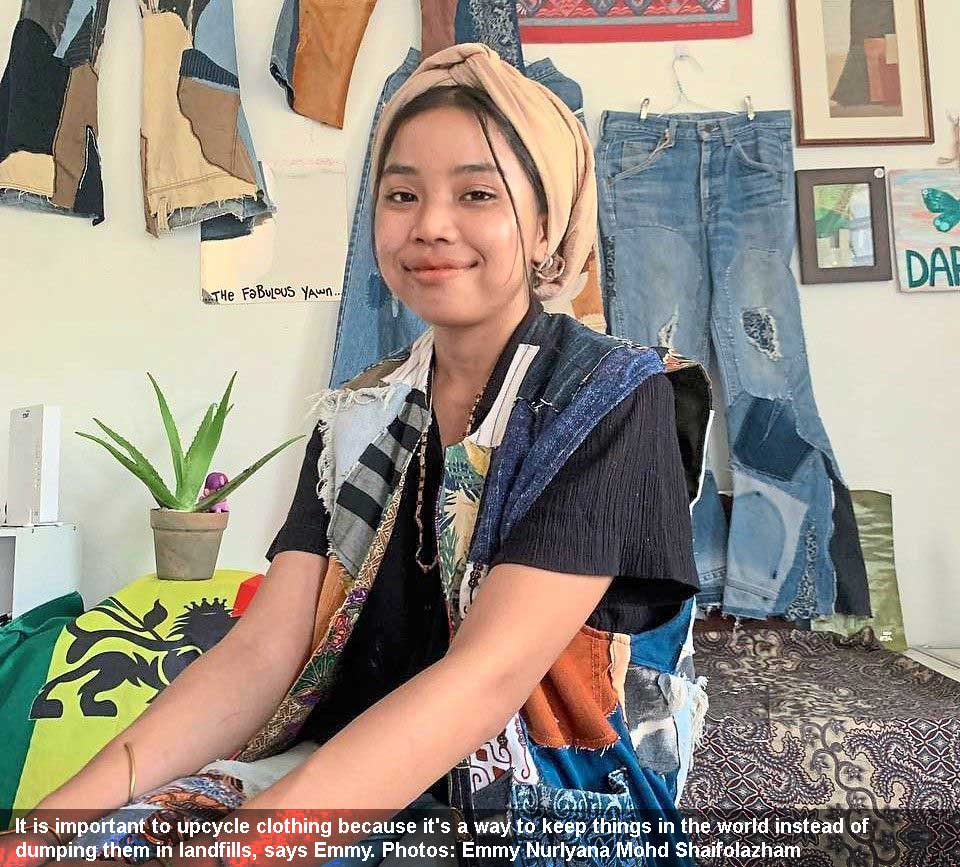
Category: GARMENTS
Country: Malaysia
Region: Asia
By Sheela Chandran
Friday, 05 May 2023
9:00 AM MYT
Home-based clothing designer and crafter, Emmy Nurlyana Mohd Shaifolazham, 27, always finds herself with carbage (shreds and patches of leftover fabric) and scraps of material from her various sewing projects.
Instead of discarding the scraps, however, Emmy upcycles the sometimes oddly cut remnant fabric offcuts by creating patchwork pieces and using them to repurpose old clothes to breath new life (and new looks) into them.
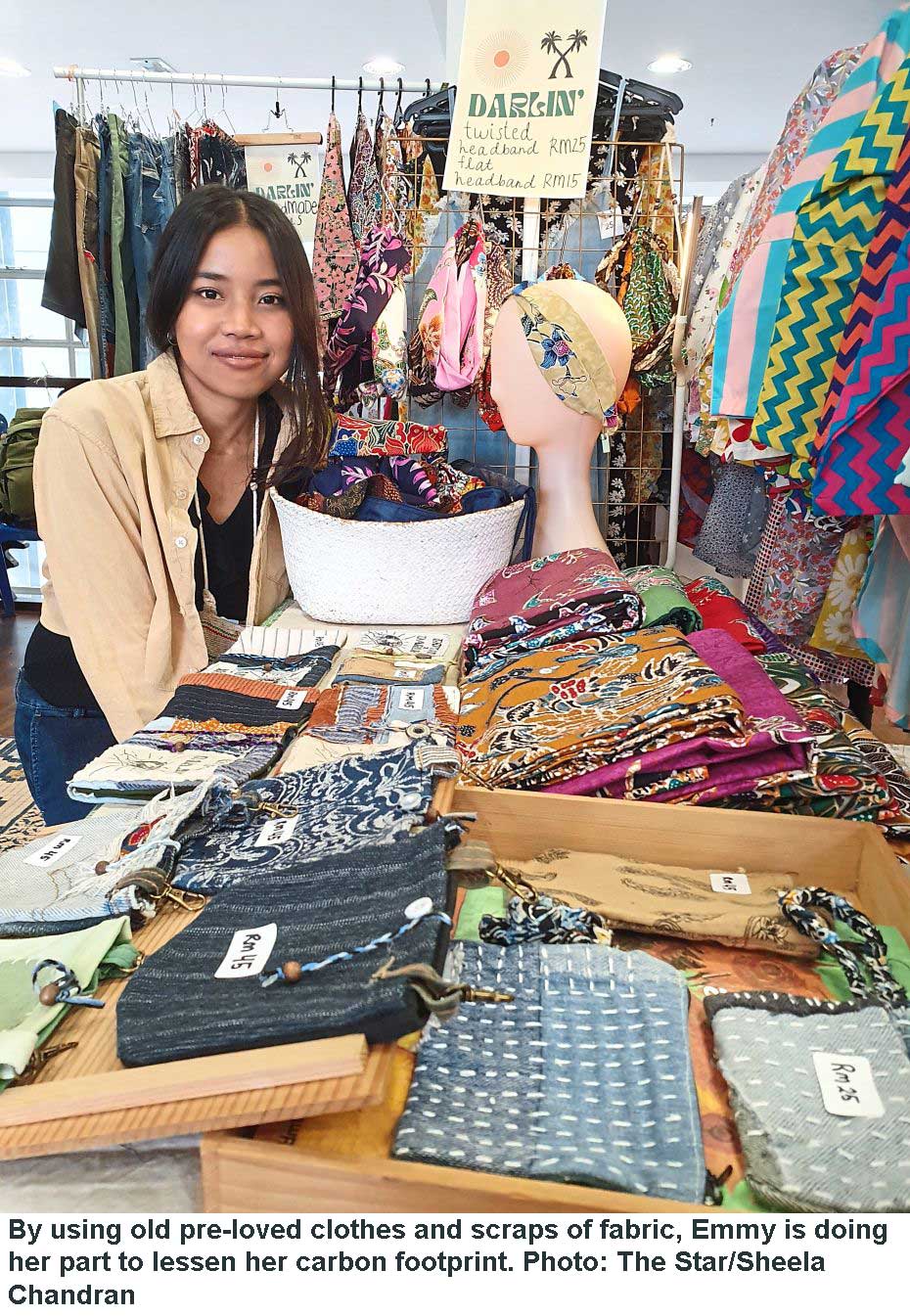 She takes pride in turning discarded materials as well as pre-loved clothes, into something new that’s both beautiful and functional.
She takes pride in turning discarded materials as well as pre-loved clothes, into something new that’s both beautiful and functional.
She makes pouches, shoes, refashions old outfits and also creates wall-hangings using the salvaged materials.
“All the fabrics I use are either scrap fabrics, pre-loved clothes from my wardrobe or clothing donated by friends and local thrift stores.
“In designing, my goal is always to make the most of fabric and to see that clothes have a longer shelf life,” says Emmy, who showcased her clothes and stuff at a recent vintage and pre-loved clothing bazaar in Kuala Lumpur.
Her brand KoyakPatchwork is an example of sustainable fashion – fashion that can have a positive impact on, and not harm, the environment.
KoyakPatchwork is an extension of Emmy’s fashion label Darlin.kl, which focuses on slow and sustainable fashion and art.
“Patchwork is perfectly suited to my style and my desire for sustainability. I chose patchwork not only because it can fix or ‘hide’ defects on clothing, but because it can also transform clothing and give (old) clothes a new look.
“I combined patchworking with a Japanese style of stitching called sashiko which reinforces the bonds of the different types of fabrics I combine.”
Sustainability matters
The Universiti Teknologi Mara (UiTM) fashion design graduate is well aware that the fashion industry has become one of the largest environmental polluters.
The production of fast fashion, for example, has significant impacts on the environment whether it is water pollution, greenhouse gas emissions or textile waste.
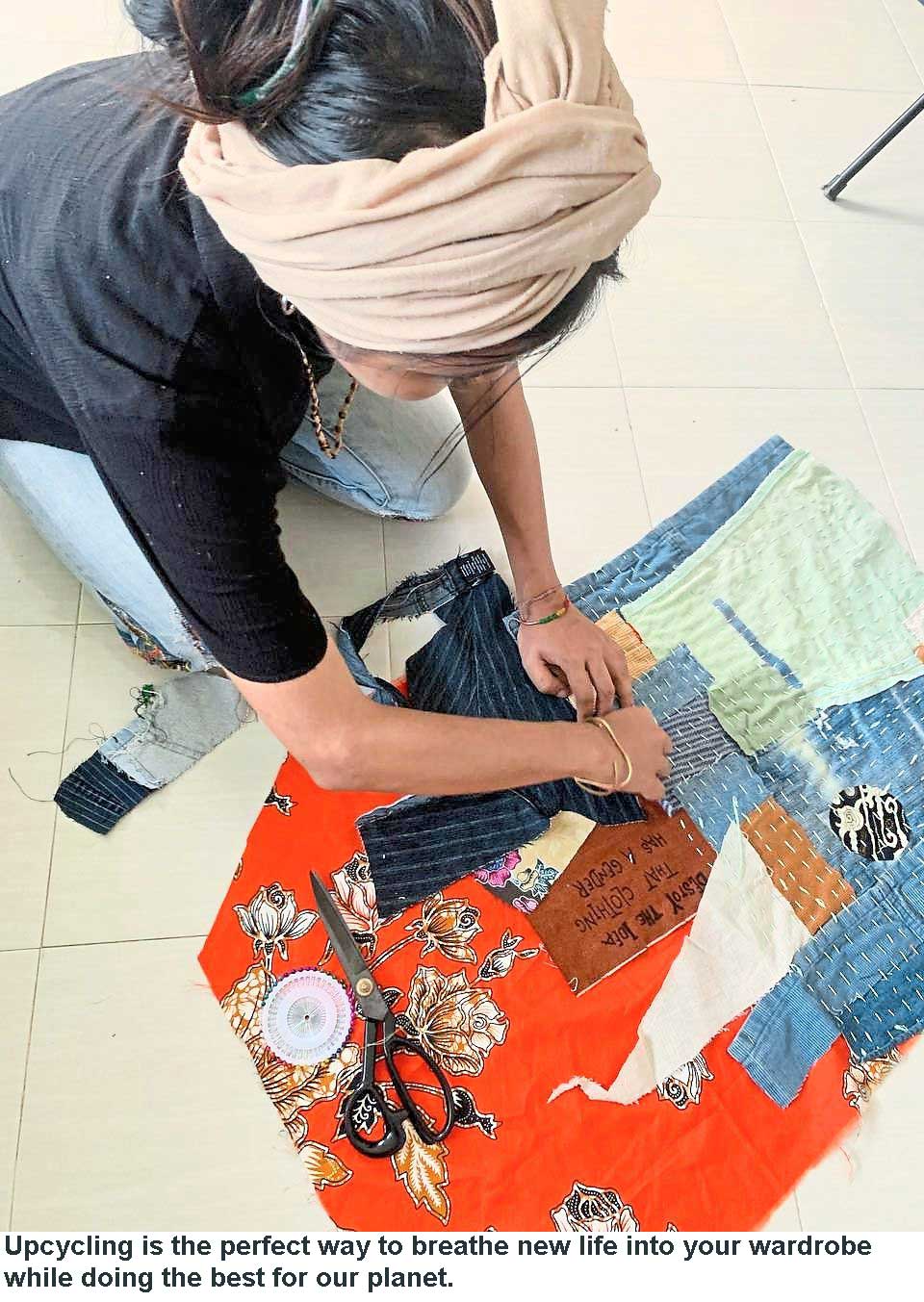 By her creative upcycling of pre-loved clothes with fabric scraps, Emmy hopes she is doing her part and reducing her own carbon footprint, following in the footsteps of many international fashion designers such as Stella McCartney, Eileen Fisher and Mara Hoffman, who are known for their sustainable practices.
By her creative upcycling of pre-loved clothes with fabric scraps, Emmy hopes she is doing her part and reducing her own carbon footprint, following in the footsteps of many international fashion designers such as Stella McCartney, Eileen Fisher and Mara Hoffman, who are known for their sustainable practices.
“It is important to upcycle clothing because it’s a way to keep things in use instead of dumping them in the landfill.
Upcycling is an easy way to breathe new life into your wardrobe while doing something good for our planet.
“If we continue to abuse nature’s resources, then we will need another planet to live on,” she says.
“We owe it to our environment and the next generation (to live more sustainably),” says Emmy, who moved from her hometown in Seremban in Negri Sembilan to Langkawi, Kedah last year to reduce her cost of living.
Emmy is an advocate of slow fashion, a sustainable and ethical approach to style that emphasises quality, durability, and timeless designs.
According to Emmy, consumers can reduce their own carbon footprint by also supporting slow fashion, fair labour practices and reducing individual textile waste.
A throwback vibe
There is a certain nostalgic charm to Emmy’s creations, especially in how she combines batik material on denim, or how she employs sashiko in her upcycled clothes. She says that her designs are inspired from the 1960s era, or “the hippie era”.
“I am fascinated by that era, especially the tie-dye designs, flowing silhouettes and patchwork technique.
“This is reflected in my designs and style, where I try to be innovative with the scraps I use while also keeping today’s style trends in mind. Some of the trends we wear today are actually rooted in the counterculture of the 1960s,” she says.
“I love fashion and art. I learnt to sew when I was studying at UiTM. KoyakPatchwork isn’t just about one technique.
“I combine different techniques like bleaching, mending and painting in my designs,” explains Emmy, who shares her creations on her Instagram.
She admits that her increased awareness about the impact of the fashion industry on the environment prompted her to change her approach to fashion and was the catalyst to her ethical and sustainable focus.
She was determined to create work that is both eco-friendly and aesthetically pleasing.
“It is extremely important because it’s the way to keep things in the world instead of dumping them in the landfill.
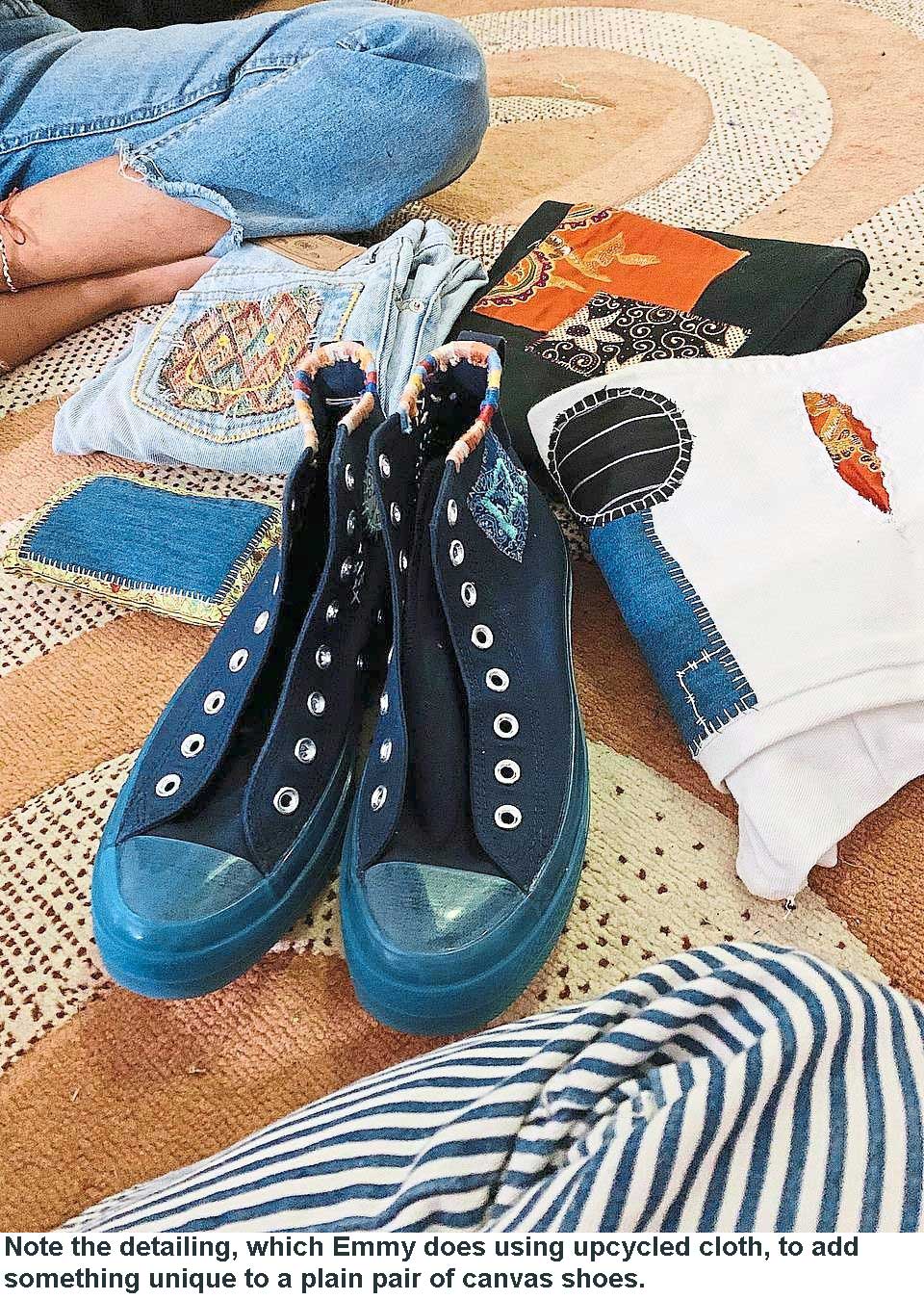 “Upcycling is the perfect opportunity to breathe new life into your wardrobe while doing the best for our planet. It will be the alternative to the present culture of buying things fast and furiously. It will make us slow down and not treat fashion as something so disposable anymore.”
“Upcycling is the perfect opportunity to breathe new life into your wardrobe while doing the best for our planet. It will be the alternative to the present culture of buying things fast and furiously. It will make us slow down and not treat fashion as something so disposable anymore.”
Making clothes last
Emmy’s philosophy on sustainable fashion is grounded in the principles of upcycling and slow fashion
Upcycling involves the transformation of old and discarded fabrics (or clothes) into something new and functional, while slow fashion advocates for a more mindful approach to clothing production and consumption.
According to Emmy, slow fashion is about creating high-quality pieces designed to last a long time (rather than clothing that follows fast-changing trends that lead to overproduction and overconsumption).
“Every piece of my clothing has its own story. By combining different fabrics and techniques, each piece is one of a kind,” she says, adding that a trademark of her style includes the visible stitching on the outside of her designs.
“My focus is to use as few new materials as possible, while at the same time adding my personal, artisanal touch.
“The result (I hope to get) is chic, stylish and Instagramable looks. I want customers to be a part of this revolution. Not only will you be helping the planet, but you will look trendy while doing it.”Regarding the misconception that pre-loved items are “old-fashioned” and “cheap”, she says: “If there’s one thing true about fashion it’s that trends follow a cycle and what was popular decades ago will always come back in style.
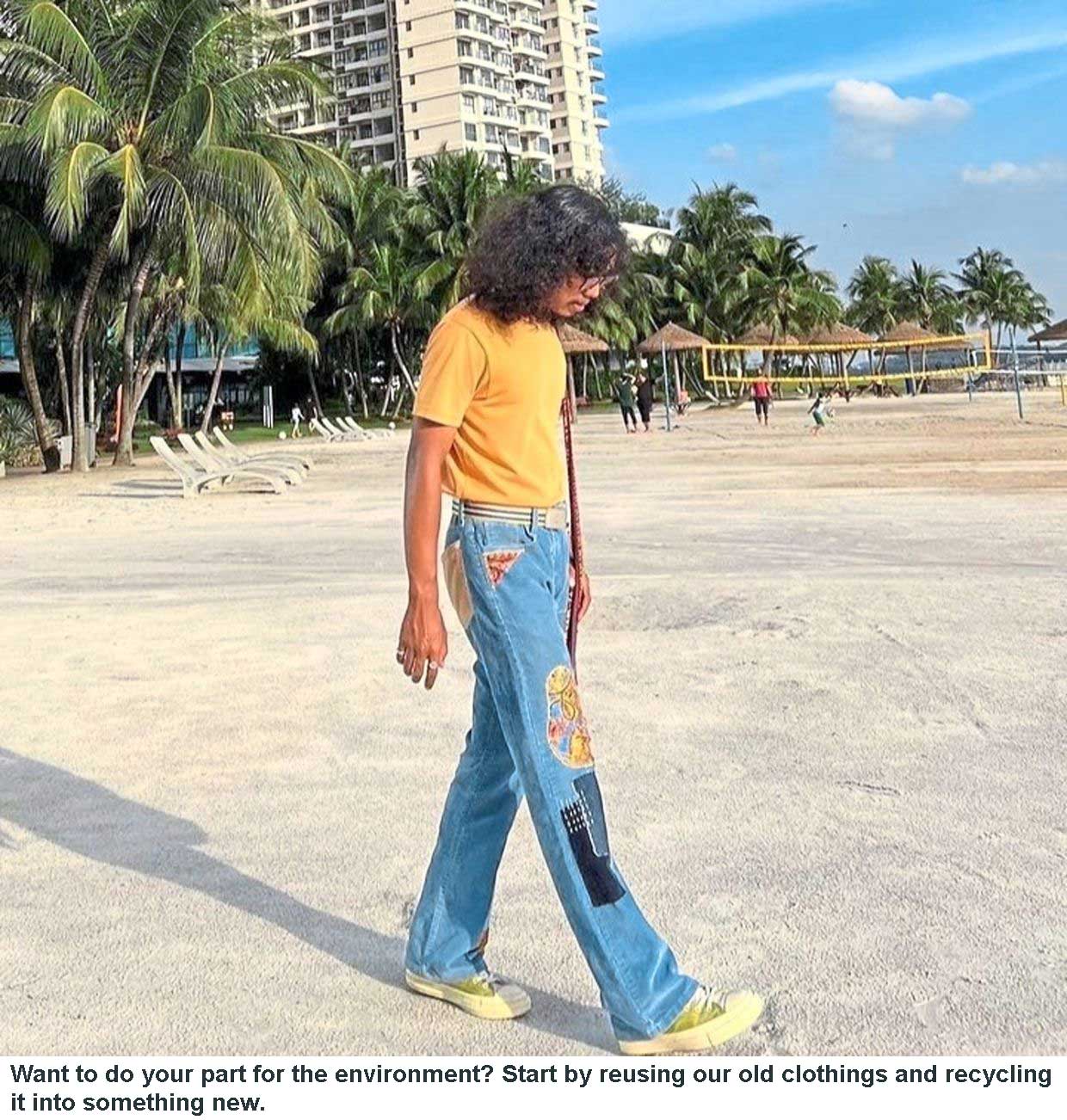 “Moreover, making a statement with vintage or reworked pieces is trending now.”
“Moreover, making a statement with vintage or reworked pieces is trending now.”
By working on her upcycled fashion projects, Emmy says she also gets to tap into her creativity and improve her skills as a designer while also inspiring change.
“Experience aids my learning, development, and evolution as a designer. It is always a great feeling seeing my customers looking stylish in my creations on the streets.”
She says anyone can do their part to live more sustainably.
“We can actually start by reusing our old clothing and upcycling them into something new.
“There are loads of easy do-it-yourself videos on social media platforms... just be creative!
“Next, encourage people to shop for pre-loved items. You save a lot of money and also if you’re lucky, you can score some awesome rare vintage pieces at an affordable price. By doing so, you’re also supporting your local businesses.”
Courtesy: https://www.thestar.com.my/lifestyle/people/2023/05/05/malaysian-fashion-designer-embraces-fabric-waste-towards-a-more-sustainable-future
Copyrights © 2025 GLOBAL TEXTILE SOURCE. All rights reserved.